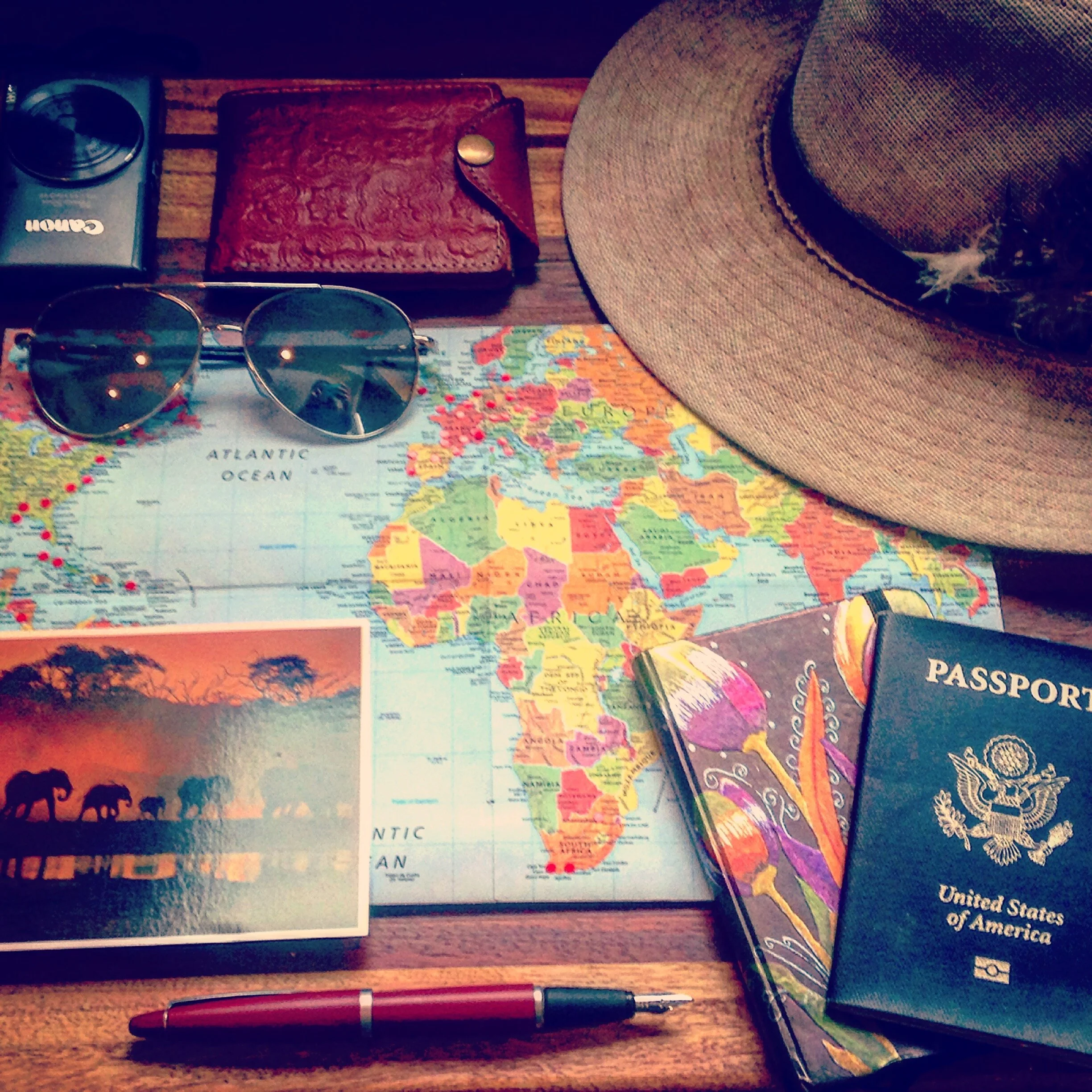Packing can be daunting, and sometimes when you don’t know what you need it can be tempting to just bring EVERYTHING, just in case. But then you’re stuck with a heavy, over-sized bag you have to lug around for the whole trip. The trick is to bring everything you need and use everything you bring, but nothing more. Here are some essentials we couldn’t live without, whether we’re in the wetlands of the Okavango Delta in Botswana or the dry Namib desert, the high plains of Kenya or the lowveld of South Africa.
A good hat - a riding hat, a.k.a. your helmet, is a no-brainer! But it’s also important to protect yourself when you’re not riding. The African sun is relentless, and you will be spending a lot of time outside even when not in the saddle.
Personally, I like synthetic straw hats, that look like straw hats but they are squishable and washable, and often have an elastic band inside which really help them stay on. Mine is from Cape Union Mart in South Africa.
Low boots and half chaps - while tall boots are great, especially if you have a comfortable pair, low boots and chaps are the way to go when on safari. It’s nice to be able to take your chaps off when you stop for lunch on a hot day, and paddock boots can double as walking shoes or hiking boots. You also might get wet or muddy, and half chaps will dry quicker than tall boots, plus you would hate to ruin your nice, probably expensive, tall boots. Riding in the bush can be rough on your equipment, and half chaps are more expendable than expensive tall boots.
As I have a tendency to really beat up my boots, and I wear them for far more activities than riding, I opted for a pair from Target, the Kamryn boot by Universal Thread Goods - they’re not officially riding boots, but they look, fit, and ride like paddock boots. They both lace and zip, so I can tighten them for riding and loosen them for walking, and they have the added benefit of a tread, which gives me better traction for hiking and general walking than leather-soled paddock boots.
Fanny Pack - maybe called a bum bag, depending on where you’re coming from (fanny has a significantly different meaning in the UK than in the US). A small bag around your waist or at the top of your chaps is a great way to carry essentials like your phone and chap stick and tuck away your gloves or sunglasses when not wearing them. This allows easy access for taking photos, but doesn’t get in the way of your riding the way a backpack or larger saddle bags might. I have an elastic one from Nike which also doubles as a belt.
Breathable Breeches - some breeches may make your butt look great by keeping all the right junk in all the right places, but the stiffer material can be hot and heavy, they’re harder to wash, and they take forever to dry. Riding tights may not be the most flattering look, but soft, stretchy material will keep you cooler and dry quickly when wet.
Sunglasses + Croakie - sunglasses are key, but they won’t do you much good if they fall off. Plus, if it gets cloudy or you’re riding at sunset, you might want to take them off and they will get squashed if you put them in your saddle bags or your fanny pack. Keeping sunglasses on a croakie around your neck is a great solution.
Neutral Colors - you can often spot safari-goers right away at the Johannesburg and Cape Town airports, because they get off the plane looking like they’re ready to walk right into the bush. Khakis, olive greens, tans, and browns will help you not just to blend in to your surroundings, but to appear natural to the animals you are trying to approach. Plus, they won’t show dirt so much.
Seat Savers and Knee Relief Stirrups - not everyone needs these, but when you’re spending very long days in unfamiliar saddles, moving at a fast pace or over tricky terrain, they will certainly make you more comfortable. There’s nothing worse than being rubbed raw by a saddle somewhere, and then having to ride sore the rest of the trip, so get a seat saver and it will also save your butt!
Sunscreen - sunscreen is shockingly expensive in other countries, and sometimes in rural areas it can be hard to find at all, or the selection might be pretty slim. Rather than getting stuck with something the consistency of wood glue that makes you break out, bring your own so you know your skin will be happy and sunburn-free.
Scarf or Buff - a lightweight scarf can double as protection against the sun, where a buff also comes in handy, but sometimes evenings and nights can be cool. A versatile scarf goes a long way.
A sense of humor - sometimes on safari things just don’t go according to plan. You’re not going to always ride your best out in the bush, and spending time with friends or strangers in close proximity can lead to some awkward moments. As long as you can laugh at whatever comes your way, you’ll have a great time!
Horseback Safari
Adventure
This is no ordinary safari—this is a horseback adventure. Seeing wildlife in a wild landscape from the saddle encompasses a level of immersion in nature that a standard safari vehicle just doesn’t offer, and a relationship with the wildlife that is unparalleled.
How to Choose the Right Riding Safari
An African safari is a truly magical experience regardless of the mode of transportation, but there’s something extra special about a safari on horseback. But Africa is vast and the options are infinite, so where do you even start?




